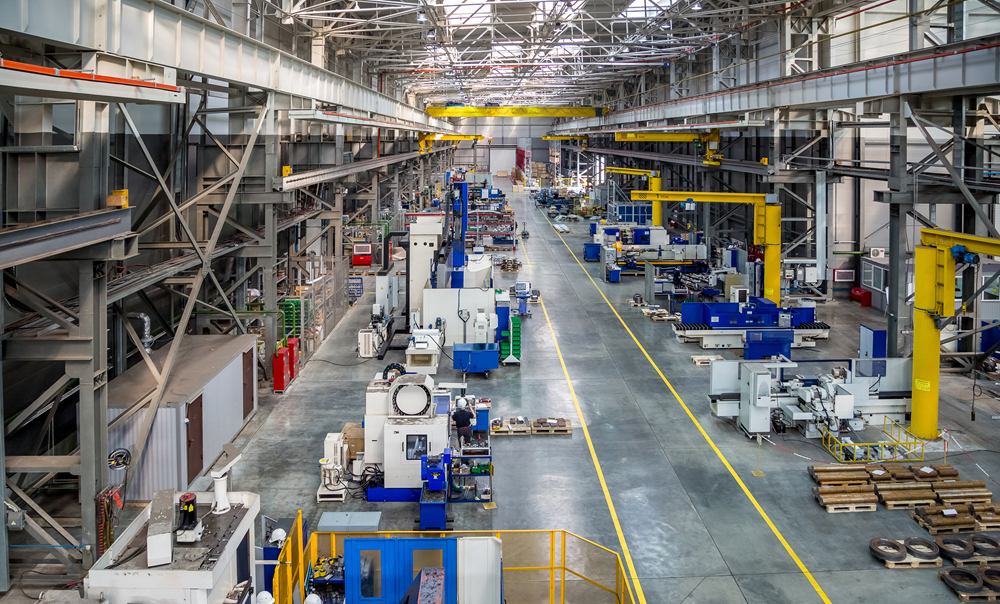Approximately 300,000 jobs get outsourced to countries outside the U.S. each year, causing serious ramifications for industries like metalworking. For operations looking to help boost domestic manufacturing and take control of their processes, in-house manufacturing offers a way out of the outsourcing cycle.
However, understanding when and where to bring manufacturing in-house is more challenging than it sounds. Identifying key pain points and successfully executing your plan requires patience, expertise, and strategy. Join us as we highlight some of the benefits you can expect from in-house manufacturing and how to know when (and when not) to make the switch.
Why You Should Consider Manufacturing In-House
While outsourcing can have its financial benefits and potentially reduce costs, the long-term advantages of in-house manufacturing may outweigh any initial cost savings. Here are a few key benefits you can experience by bringing your manufacturing in-house.
Improved Quality Control
One benefit of in-house manufacturing is having more control over the quality of your end product. While outsourcing requires due diligence on whether the product you receive will meet your standards, in-house manufacturing offers full control over the production process. In-house manufacturing allows for product or process changes to be made more easily if necessary, giving you more flexibility across the production pipeline to update and adjust as needed.
Greater Cross-Team Communication
In-house manufacturing offers total access to the entire manufacturing team, so your employees can freely communicate with other departments to better develop future new products. One added benefit of this communication is improved research and development (R&D). With outsourcing, your R&D team has limited visibility into the production process until it’s over. Alternatively, outsourcing your R&D could lead to lengthy, inefficient communication regarding corrections or adjustments.
Shorter Lead Times
Without shipping your end products overseas or across country lines, your customers will receive their products faster. Shorter lead times lead to more loyal customers and less concern over meeting deadlines due to shipping delays. This improved loyalty may lead to higher order volume that you’ll be able to produce and deliver more quickly, creating a loop of long-term return on investment that can help you combat the initial costs of moving manufacturing in-house.
Making the Switch to In-House Manufacturing
Deciding whether to outsource your manufacturing operation or switch to in-house will depend on your current operation’s constraints, needs, and flexibility. Starting small will allow you to test the waters before committing to a full-scale operation.
Before you jump head-first into a switch, consider where you can benefit most from in-house manufacturing by identifying bottlenecks and high-risk production areas. Since manufacturing in-house offers your team more quality control, starting with your most error-prone or high-value processes will help maximize your initial benefit.
Once you’ve identified the manufacturing processes you plan on bringing in-house, choose the equipment and resources that will help you maximize the quality of your output. Choosing the right machines and even the right cutting fluids for your operation, like TRIM® MicroSol® 685XT or TRIM C290, will ultimately make all the difference in the success of your in-house manufacturing.
Common Roadblocks to Manufacturing In-House
Although in-house manufacturing has its benefits, it may not necessarily be the best choice for every operation. For example, to manufacture in-house, you must have access to a facility that can contain your operation and resources, and a higher up front investment may be needed to purchase necessary machinery.
Beyond the initial investment and resources, you will also need to hire skilled labor. With a current need to fill around 2 million skilled manufacturing positions industry-wide, you will be competing with many other businesses to attract, retain, and afford skilled workers.
Many factors that prevent businesses from bringing manufacturing in-house are difficult to overcome or out of their control — making outsourcing a logical choice for the time being.
Deciding Whether In-House Manufacturing Is Right for You
Take the time to consider and analyze the costs and benefits of bringing your manufacturing in-house. While there may be several key advantages, pushing your business to make an unsustainable decision may not be worth the risk. If you find in-house manufacturing out of reach, be sure to choose your outsourcing suppliers carefully to avoid common pitfalls. If you do decide to bring your manufacturing in-house, consider investing in high-quality products to keep your operations running smoothly. Master Fluid Solutions has a wide array of products designed to maximize your output and optimize your machine and tool life. Contact us today at 1-800-874-0105 or info@masterfluids.com to learn more about which products can help improve your in-house manufacturing.

